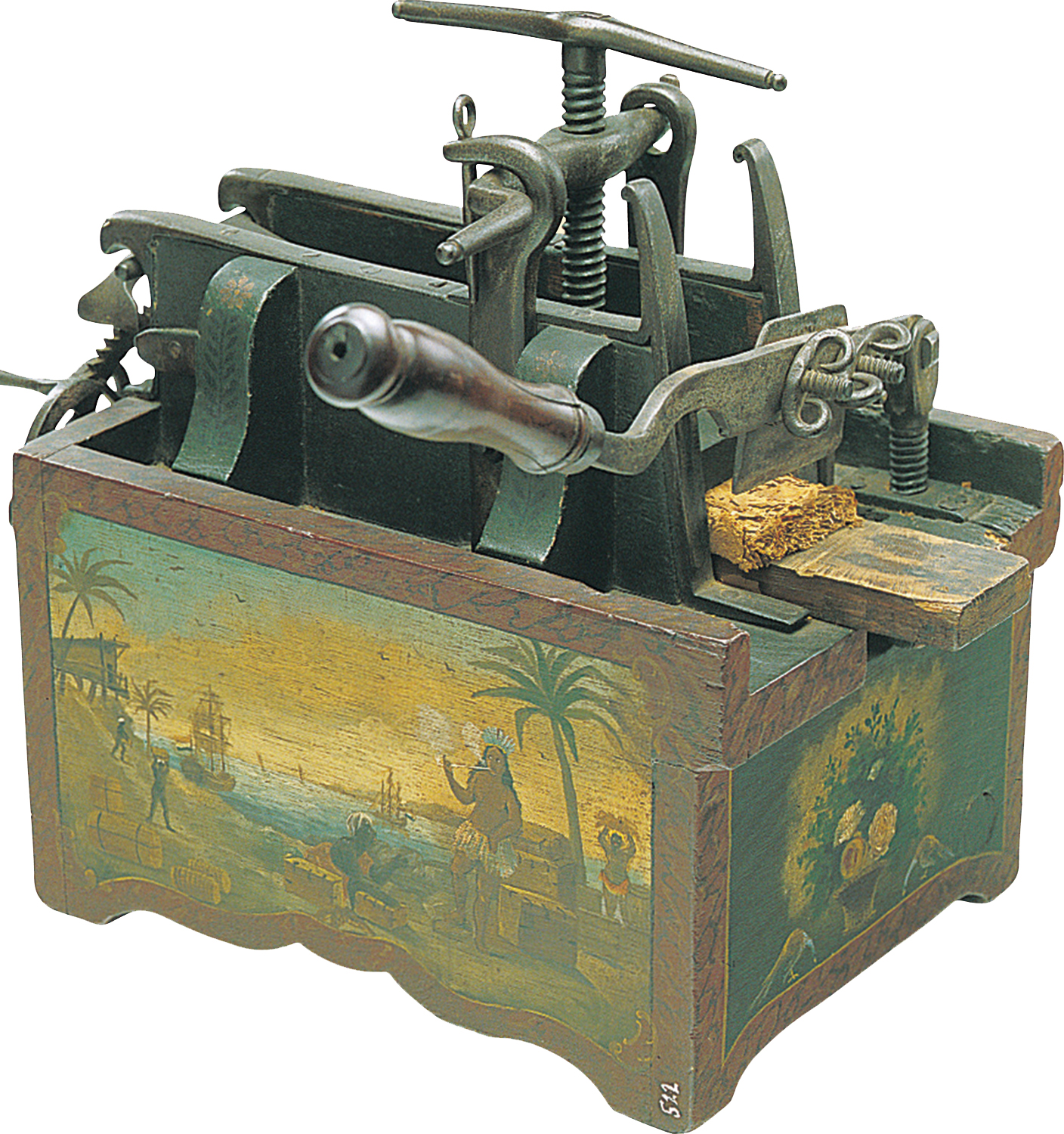Beyond America’s Borders: “American Tobacco and European Consumers”
English colonies in the Chesapeake were “wholly built upon smoke,” King Charles I observed during the second quarter of the seventeenth century. The king’s shrewd observation highlighted the fundamental reason the seventeenth-
Some Europeans hated tobacco, most notably England’s King James I (who preceded Charles I). In A Counterblaste to Tobacco, a pamphlet published in 1611, James declared that smoking was “A custome lothsome to the eye, hatefull to the Nose, harmefull to the braine, [and] dangerous to the Lungs.” He reviled the “filthy smoke,” the “stinking Suffumigation,” the “spitting,” the “lust,” the “shameful imbecilitie,” and the “sin” of tobacco. James’s fulminations acknowledged that “the generall use of Tobacco” was “daily practiced . . . by all sorts and complexions of people.” He noted, “The publike use [of tobacco], at all times, and in all places, hath now so farre prevailed that a man cannot heartily welcome his friend now, but straight they must bee in hand with Tobacco.” Clearly, James championed a lost cause.

When the Spaniards first brought tobacco to Europe during the sixteenth century, physicians praised it as a wonder drug. One proclaimed that “this precious herb is so general a human need [that it is] not only for the sick but for the healthy.” Such strong recommendations from learned men were reinforced by everyday experiences of commoners. Sailors returning from the New World “suck in as much smoke as they can,” one Spaniard observed, “[and] in this way they say that their hunger and thirst are allayed, their strength is restored and their spirits are refreshed; [and] . . . their brains are lulled by a joyous intoxication.” That joyous intoxication—
At the beginning of the seventeenth century, tobacco was scarce and therefore expensive. In 1603, for example, England imported only about 25,000 pounds of tobacco, all from New Spain. By 1700, England imported nearly 40 million pounds of tobacco, almost all from the Chesapeake colonies. The huge increase in the tobacco supply caused prices to plummet. A quantity of tobacco that sold for a dollar in 1600 cost less than two and a half cents by 1700.
The low prices made possible by bumper crops harvested by planters in the Chesapeake transformed tobacco consumption in England and elsewhere in Europe. Annual per capita tobacco use in England grew more than 200-
Tobacco altered European culture. It spawned new industries, new habits, and new forms of social life. Smoking was the most common form of tobacco consumption in the seventeenth century, and smokers also needed pipes, boxes, or tins to hold their tobacco; a flint and steel to strike sparks; pipe cleaners; and spittoons, if they were smoking in a respectable place that disapproved of spitting on the floor. European merchants and manufacturers supplied all these needs, along with the tobacco itself, which had to be graded, chopped, flavored, packaged, stored, advertised, and sold. Men and women smoked in taverns, in smoking clubs, around dinner tables, and in bed.
The somewhat cumbersome paraphernalia of smoking caused many tobacco users to shift to snuff, which became common in the eighteenth century. Snuff use eliminated smoke, fire, and spitting, replacing them with the more refined gesture of taking a pinch of powdered, flavored tobacco from a snuffbox and sniffing it into one or both nostrils, which produced a fashionable sneeze followed by a genteel wipe with a dainty handkerchief. One snuff taker explained the health benefits of such a sneeze: “by its gently pricking and stimulating the membranes, [snuff] causes Sneezing or Contractions, whereby the Glands like so many squeezed Sponges, dismiss their Seriosities and Filth.”
Whether consumed by sniffing, smoking, or in other ways, tobacco profoundly changed European habits, economies, and societies. And its popularity turned the Chesapeake colonies into invaluable assets for England.
America in a Global Context
- Why did European demand for tobacco grow so dramatically during the seventeenth century?
- How did Europeans use tobacco, and why? Why did some people object to tobacco use?
- What were the consequences of the transatlantic tobacco market both in the Chesapeake and in Europe?
Connect to the Big Idea
In what ways did tobacco shape America’s colonial history?